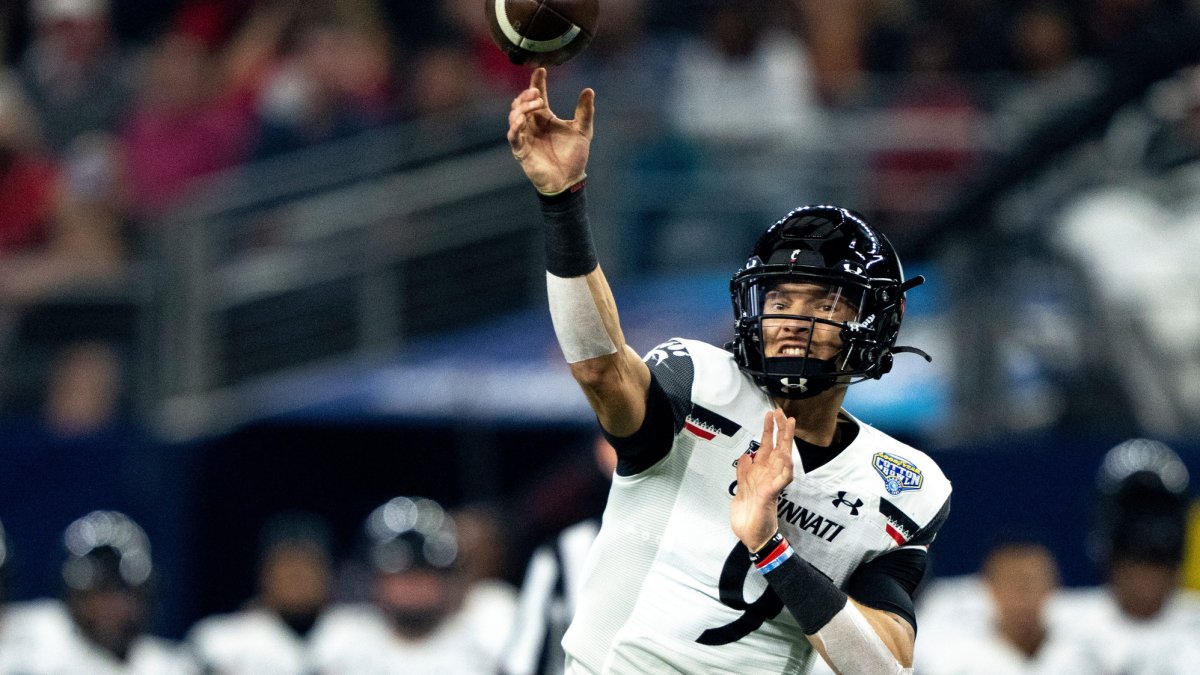The 2021 NFL season is officially over, and with that comes the unofficial start of NFL draft season.
We’ve already looked at some of the leaders in the barren 2022 quarterback class using our college-to-pro system, with Carson Strong and Malik Willis drawing mixed reviews thus far.
Click here for more PFF tools:
Rankings & Projections | WR/CB Matchup Chart | NFL & NCAA Betting Dashboards | NFL Player Props Tool | NFL & NCAA Power Rankings
Best Bets Tool
In this article, we will look at Cincinnati Bearcats quarterback Desmond Ridder. A four-year starter for the Bearcats, Ridder increased both his overall PFF grade and his PFF passing grade each season from 2019 to 2021. This past season, his 90.7 overall grade ranked 15th in the country, and he recorded 8.6 yards per pass attempt and 5.6 yards per carry on the ground.
This past season was the first in which Ridder didn’t generate over 700 yards rushing, largely because it was the first season in which he threw for over 2,500 yards.
When comparing the senior to other passers who have made it to the NFL, the data is not necessarily impressive:

The picture looks much better if we use data from only the 2021 season, and the results from a clean pocket and on early downs are particularly impressive. The 6-foot-4, 215-pound quarterback still struggles to avoid mistakes, but teams can often overcome this shortfall — as we learned this season with Matthew Stafford.

Given there is a budding collection of smart people who have Ridder as QB1, it’s time for him to get our college-to-pro projection treatment:
I have officially watched the top quarterbacks in the draft class. You gotta be kidding me if you don't have Desmond Ridder as QB1 this year
— Justis Mosqueda (@JuMosq) February 9, 2022
my vote for QB1 in the 2022 NFL Draft: Desmond Ridderhttps://t.co/H3pnQwWini
— Anthony Treash (@atreash_) February 10, 2022
Our college-to-pro system weighs data from recent seasons heavier than others and more stable data heavier than noisier data. We also adjust for competition and situations (i.e., how teams will use him when he gets to the league).
Our system allows us to permute through several situations, looking at a player’s first through fifth year in good situations and bad. Here is Ridder’s projection in his rookie year in league-average circumstances:

Exclusive content for premium subscribers

WANT TO KEEP READING?
Dominate Fantasy Football & Betting with AI-Powered Data & Tools Trusted By All 32 Teams
Already have a subscription? Log in



 © 2025 PFF - all rights reserved.
© 2025 PFF - all rights reserved.